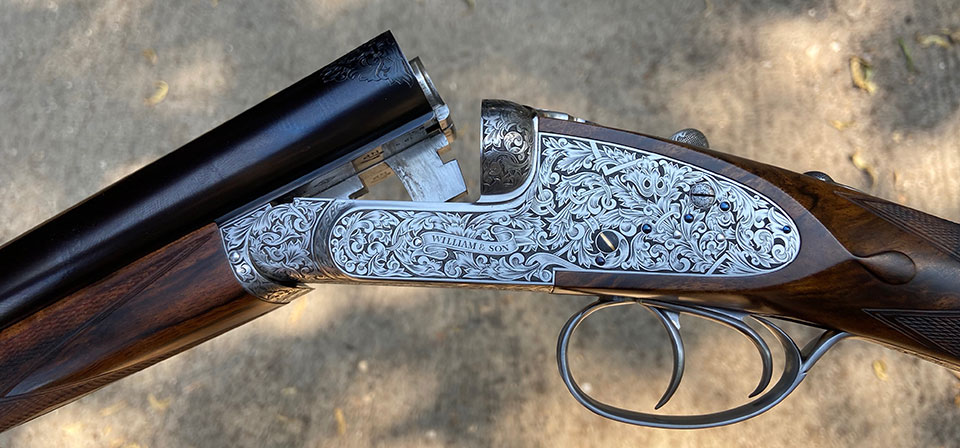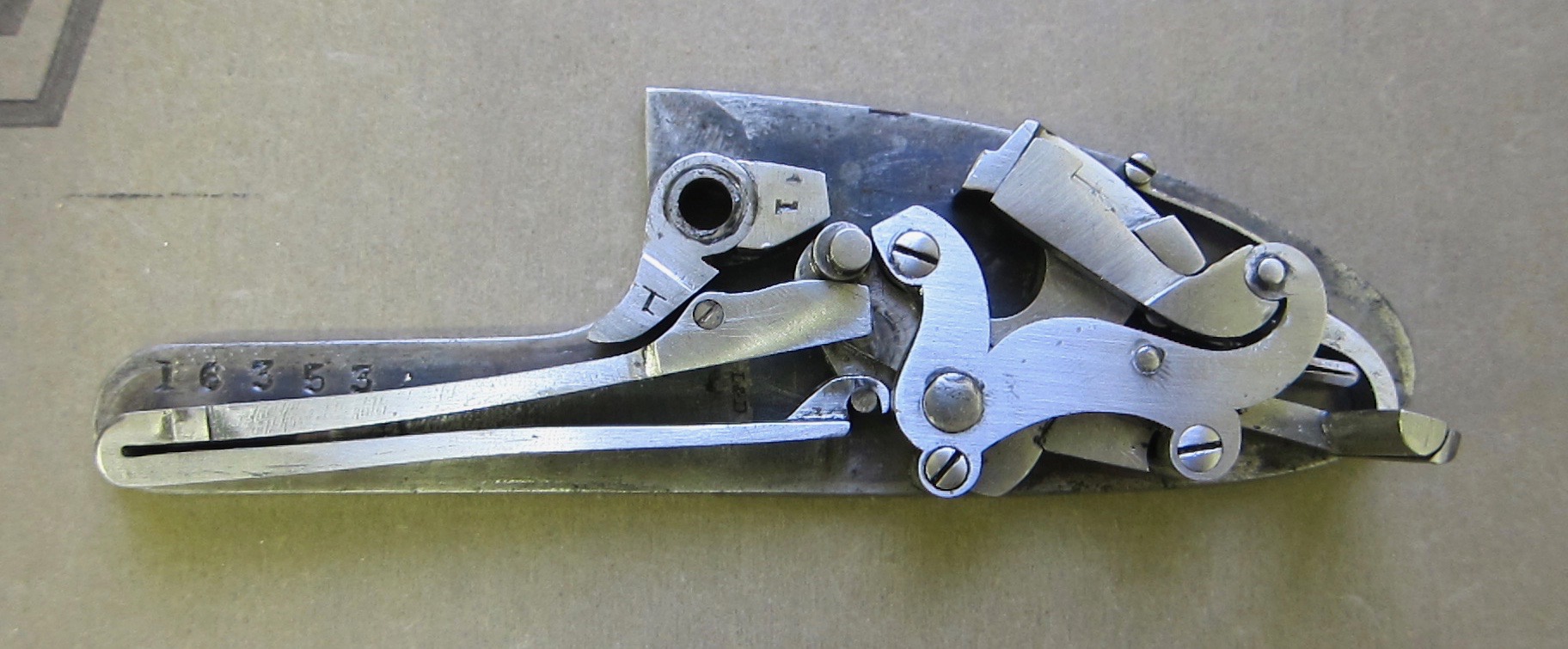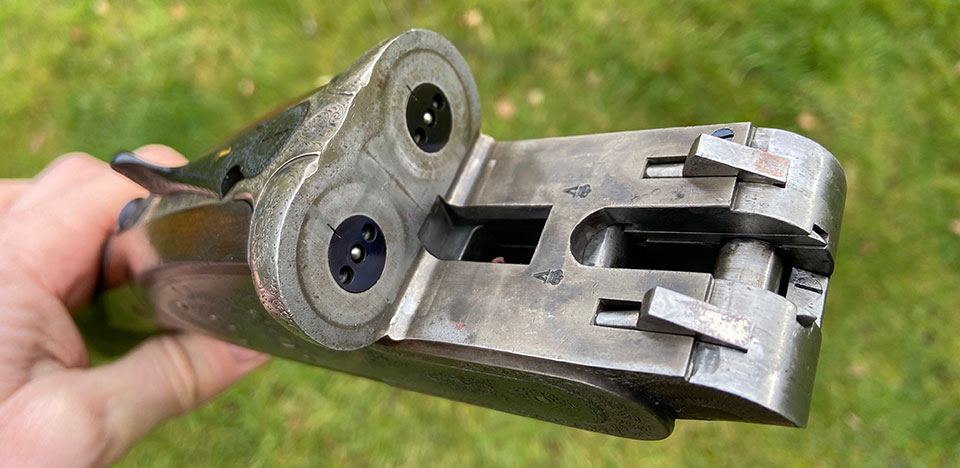We all take it for granted today that opening and closing a shotgun is a quick, easy and effortless operation, not really requiring much thought. However, this basic, though vital, process is the essence of a breech-loading gun and to get where we are today required several steps.
Manual Operation
Early breech loaders required the user to operate the lever, then ease the gun open. When closing it, the user had to push barrels and action together manually and then lock them shut by moving the lever. In the case of slide-and-drop actions, like the Charles Lancaster, it involved a two stage locking process; first lifting the barrels to the horizontal, then drawing them back on the cam, until they locked into the breech face.
Lever Cocking and Opening
Some hammerless actions, like the early MacNaughton ‘Edinburgh’ guns used the lever to cock the locks first, then draw back the bolt to open the gun.
Barrel Cocking
By 1875, hammerless guns, like the Anson & Deeley boxlock, used the drop of the barrels to cock the locks, the lever only being employed to retract the bolting system. This, essentially, is the most common method employed by gunmakers today for trigger-plate, side-lock and boxlock side-by-sides and for over & under guns.
Assisted Opening Systems
Relying on the weight of the barrels to drop on the hinge pin and cock the locks, as well as open the gun to remove spent shells or activate the ejectors is not very dynamic. If any resistance is met, perhaps a hot action binding slightly, or strikers sticking in primers, the barrels need to be pushed down to get the opening process started. It requires two hands on the gun.
Gunmakers saw the benefits of using some kind of mechanism to press on the barrels and force them from the action at the breech, thereby opening the gun with a powerful push.
Some assisted opening, or ‘easy-opening’ features, like the standard Boss side-lock, with its coil-spring ejectors, benefit from the incidental pressure of the ejector springs pressing the extractors against the breech face, when the gun has not been fired. However, once fired this no longer works. An assisted opening mechanism opens the gun either when it has not been fired. Boss developed a proper self-opener in the mid 1930s, but London’s better known self-openers emerged from Boss’s two main rivals.
Self Opening Systems
The Holland & Holland (Henry Holland & William Mansfield patent) of 1922 has stood the test of time. Until then, the Holland & Holland ‘Royal’ was a conventional bar action side-lock, cocked by the fall of the barrels, the bolt snapping shut when barrels were returned to the closed position.

The 1922 patent placed a coil-spring powered plunger system under the forend, which is compressed when the gun is closed and pushes the barrels and action apart when the bolt is released by the operation of the lever. The spring assists the opening of the gun, whether fired or not. They are smooth and effective but do not perform with the vigour of some self-openers.
Beesley’s patent, used by Purdey since 1880, is certainly vigorous. It uses power from the mainspring to push on rods, which project through the bar of the action, ending in flat ended limbs, which press on the barrel flats. As soon as the lever releases the bolts, the tension forces the gun open so effectively that it can be operated one-handed with total confidence, leaving the other hand to reach for cartridges, even as the gun is ejecting the spent shells.

Do they offer any advantage?
In the late 19th and early 20th centuries, the race for gunmakers was to make everything faster. Their top clients were shooting huge driven pheasant and partridge days. The name of the game was Record Bags.
Every estate wanted to be able to boast they had shot more than their neighbours. Speed and accuracy were paramount and any small advantage offered a sportsman the chance to shoot more birds than his rivals and friends in the line. Customers wanted this, so gunmakers obliged and, thereby, sold more new guns.
Faster opening systems developed alongside other improvements (or complications) designed to make shooting faster. Single triggers and ejector development were motivated by the same desires.
Today, few of us stand on a peg with the sole intention of killing every bird in front of us as fast as possible. Indeed, were you to do so, many shoots would consider you either lacking in selectivity and composure or, perhaps, plain greedy.
The number of shots per minute a competent sportsman can fire is no longer the sole imperative but, it must be acknowledged that when grouse are flinging themselves past your butt in waves or a big flush of pheasants is heading your way, it is most frustrating not to be able to re-load smoothly and quickly.

I must say a properly set-up Purdey self-opener used correctly (remember you need to deal with some pressure on closing the gun as to do so you are putting the springs back under tension) is a joy to wield, nothing enables you to keep up rapid fire quite like it.
Assisted openers that work only when the gun is unfired are of no practical merit. Self-openers promote smooth re-loading. However, the time benefits are minimal in real terms: perhaps two more shots per minute. Perhaps not even that.
What you have to contend with is more complication. Assisted openers and self-openers have more mechanical components interacting and, therefore, more functions which can go wrong.
When buying vintage, consider the advantages in performance and refinement but also the reliability and servicing that may become issues with a well-used, hundred-year-old gun during your ownership.

Published by Vintage Guns Ltd on




